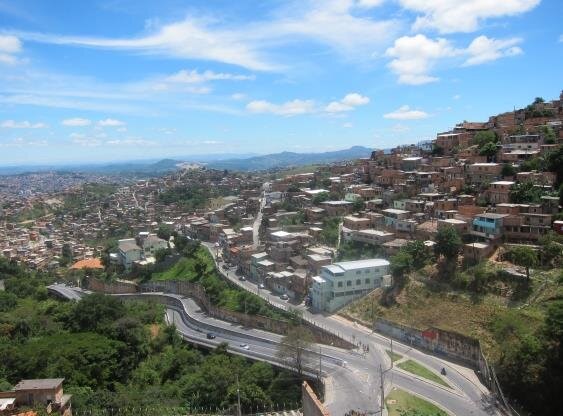Silvio Segundo Salej Higgins, Department of Sociology, Federal University of Minas Gerais (UFMG), Belo Horizonte-MG, Brazil.
Adrian Pablo Hinojosa Luna, Department of Statistics, Federal University of Minas Gerais (UFMG), Belo Horizonte-MG, Brazil.
Reinaldo Onofre dos Santos, Federal University of Juiz de Fora (UFJF), Juiz de Fora-MG, Brazil.
Since 2008, teams of researchers, funded by the European Union (POLYMOD Project), have been improving the technique of epidemiological diaries. This approach makes it possible to know precisely the number of physical contacts a person has per day, as well as the place of contact (home, school, work, etc.), the sex and age group of the people they meet, among other relevant aspects. This information avoids a very common mistake, which is to assume that the probability of infection is homogeneous in a given population, when in reality it depends on the number of daily contacts each person has, which in turn varies according to each individual’s subsistence needs and the social customs in which they live.
The article A study on social contact rates relevant for the spread of infectious diseases in a Brazilian slum, published in the Revista Brasileira de Estudos de População (vol. 40, 2023), presents the meticulous application of the epidemiological diaries’ technique in an agglomeration in the city of Belo Horizonte, an unusual fact in the Brazilian context. The Ministry of Health funded this methodological appropriation effort through research called MCTIC/CNPq/FNDCT/MS/SCTIE/Decit no. 07/2020. A sample of 1,000 households was surveyed, and an adapted version of the questionnaire used in the UK as part of the European Union’s POLYMOD project was applied. The data was collected in May 2021, amid the SARS-CoV-2 pandemic crisis.
The sample allowed us to find out the rate of daily contact between the inhabitants of the agglomeration over a time frame extending from Friday to Sunday. Respondents were asked whether, in the last twenty-four hours, they had engaged in face-to-face interactions or had any physical contact (i.e., handshakes, hugs, kisses, contact while doing sports) with one or more individuals simultaneously.
Recognizing that this was an observation at a single point in time, the data enabled the identification of various details, including the number of inhabitants per household (65% were inhabited by three people), income levels (76% of households earned up to two minimum wages, with only 37% receiveing emergency aid), the racial composition of the slum (81% declared themselves to be black or brown), and socialization spaces (inside or outside the house). All these factors contributed to variations in the average number of physical contacts per person.
The most important result of this survey was that epidemiological models are more predictive when we know that the probability of infection changes according to age, occupation, place of socialization and people’s customs. For instance, having precise knowledge that young parents aged between 20 and 34 interact with children under 14 allows us to predict the impact of infection on elderly people living in families. This is because we know that children, in turn, interact more intensely with each other, whether in the neighborhood, as observed in the cluster studied, or at school (at the time of data collection, the Belo Horizonte school system was in lockdown).
It’s worth noting how the data captured the expansive potential of acute respiratory infections in social circles such as places of worship. We know the importance of religious life in working-class communities. The data did not prove the effectiveness of emergency aid in ensuring social distancing. Everything indicated that the low coverage of emergency aid found during the collection period, coupled with the necessity of earning a living through informal work, did not allow responsible adults to remain isolated at home.
There remains the great challenge of disseminating the technique of collecting information on social contacts in epidemiological surveillance systems throughout Brazil, so that we have data over time that allows us to better understand the customs of populations, gaining precision in the expected impacts of epidemiological mitigation or control measures. Obviously, school closures do not have the same epidemic impact on low-income population groups as they do on wealthier groups.
Acknowledgements
We would like to thank Andreia Maria Pinto Rabelo, Mara Soalheiro, and Vanessa Cardoso Ferreira, who also contributed to the Revista Brasileira de Estudos de População’s Special Week.
Revista Brasileira de Estudos de População Special Week 2023
- Revista Brasileira de Estudos de População participa da Semana Especial do Blog SciELO em Perspectiva | Humanas
- Enhancing pandemic predictions by measuring daily contacts
- Intenções de fecundidade em países de alta renda e no Brasil
- Diferenciais regionais da mortalidade no Brasil entre os anos de 2008 e 2018
- Fome na adolescência: percepções de participantes do Programa Bolsa Família
- Domestic workers of Honduran origin in the U.S.A: An approximation
References
CHIN, T. et al. Contact surveys reveal heterogeneities in age-group contributions to SARS-CoV-2 dynamics in the United States. medRxiv [online]. 2021 [viewed 27 November 2023]. https://doi.org/10.1101/2021.09.25.21264082. Available from: https://www.medrxiv.org/content/10.1101/2021.09.25.21264082v1
GRIJALVA, C.G. et al. A household-based study of contact networks relevant for the spread of infectious diseases in the highlands of Peru. PLOS ONE [online]. 2015, vol. 10, no. 3, e 0118457 [viewed 27 November 2023]. https://doi.org/10.1371/journal.pone.0118457. Available from: https://journals.plos.org/plosone/article?id=10.1371/journal.pone.0118457
MOSSONG, J. et al. Social contacts and mixing patterns relevant to the spread of infectious diseases. Medic PLoS [online]. 2008, vol. 5, no. 3, e74 [viewed 27 November 2023]. https://doi.org/10.1371/journal.pmed.0050074. Available from: https://journals.plos.org/plosmedicine/article?id=10.1371/journal.pmed.0050074
PREM, K., COOK, A.R. and JIT, M. Projecting social contact matrices in 152 countries using contact surveys and demographic data. PLOS Computational Biology [online]. 2017, vol. 13, no. 9, e1005697 [viewed 27 November 2023]. https://doi.org/10.1371/journal.pcbi.1005697. Available from: https://pubmed.ncbi.nlm.nih.gov/28898249/
External links
Revista Brasileira de Estudos de População – RBEPOP: https://www.scielo.br/rbepop/
Revista Brasileira de Estudos de População – Social Media: Facebook | Twitter | Instagram
Como citar este post [ISO 690/2010]:















Recent Comments